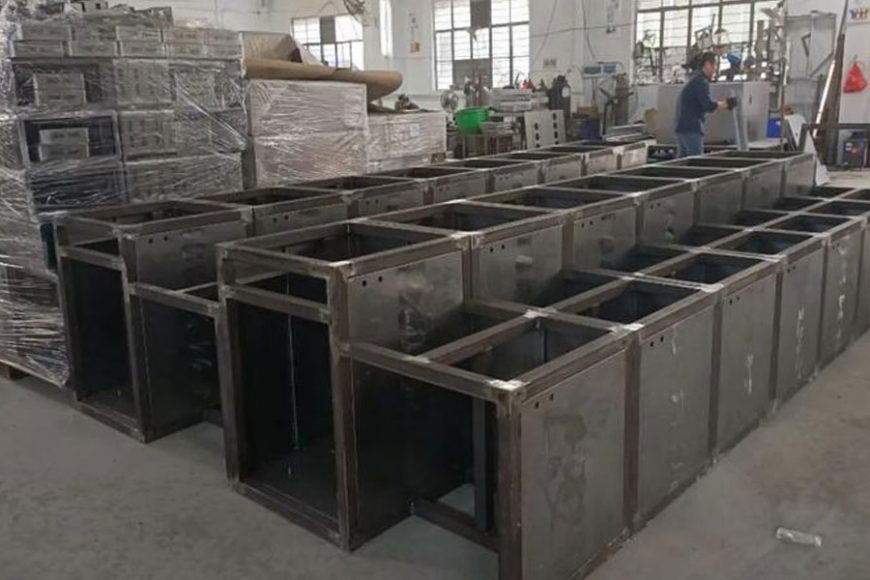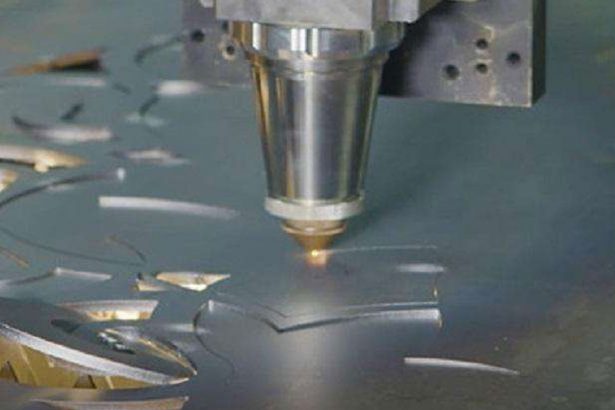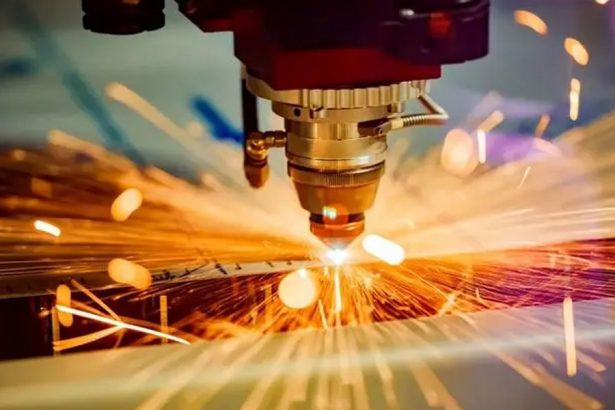The composite connection process for multi-material sheet metal parts represents a critical advancement in modern manufacturing, particularly in industries such as automotive, aerospace, and electronics, where lightweight, high-strength, and durable structures are paramount. Multi-material sheet metal parts combine dissimilar materials—such as steel, aluminum, magnesium, and fiber-reinforced composites—to leverage their complementary properties, such as high strength-to-weight ratios, corrosion resistance, and cost efficiency. However, joining these materials poses significant challenges due to their differing physical, chemical, and mechanical properties, including thermal expansion coefficients, melting points, and electrochemical compatibility. This article explores the state-of-the-art research on composite connection processes, encompassing mechanical, adhesive, thermal, and hybrid joining techniques, with a focus on recent developments, challenges, and future directions. The discussion is grounded in scientific literature and enhanced with comparative tables to elucidate key findings.
Historical Context and Evolution of Multi-Material Joining
The development of multi-material joining techniques traces back to the industrial revolution, when the need for robust connections in machinery and infrastructure drove innovations in mechanical fastening. Early methods relied heavily on riveting and bolting, which were effective for similar materials like steel but less so for dissimilar ones due to issues like galvanic corrosion. The 20th century saw the advent of welding technologies, such as arc welding and resistance spot welding, which dominated metal-to-metal joining but were often unsuitable for composites or lightweight alloys due to thermal damage.
The rise of lightweight materials in the late 20th and early 21st centuries, driven by fuel efficiency and emissions regulations, necessitated new joining methods. Adhesive bonding emerged as a versatile solution for joining dissimilar materials, offering benefits like uniform stress distribution and corrosion resistance. Simultaneously, advancements in mechanical joining, such as self-piercing riveting (SPR) and clinching, addressed the limitations of traditional fasteners by eliminating the need for pre-drilled holes. Hybrid joining techniques, combining mechanical and adhesive methods, further improved joint performance by synergizing the strengths of individual processes.
Recent decades have seen a surge in research on innovative processes like friction stir welding (FSW), laser-assisted joining, and additive manufacturing-based connections, reflecting the growing complexity of multi-material assemblies. These developments align with the broader trend toward sustainable manufacturing, where recyclability, energy efficiency, and reduced material waste are critical considerations.
Material Considerations in Multi-Material Sheet Metal Joining
Multi-material sheet metal parts typically involve combinations of metals (e.g., steel, aluminum, magnesium) and non-metals (e.g., carbon fiber-reinforced polymers (CFRP), glass fiber-reinforced polymers (GFRP)). Each material presents unique challenges and opportunities in the joining process.
Metallic Materials
- Steel: High-strength steels, such as advanced high-strength steel (AHSS), are widely used in automotive structures due to their excellent mechanical properties. However, their high carbon content can complicate welding processes, leading to issues like weld imperfection and reduced ductility.
- Aluminum: Aluminum alloys offer a high strength-to-weight ratio and corrosion resistance but have low melting points and high thermal conductivity, making them prone to distortion during thermal joining.
- Magnesium: Magnesium alloys are among the lightest structural metals but are highly reactive and susceptible to galvanic corrosion when joined with dissimilar metals.
Composite Materials
- Fiber-Reinforced Polymers (FRPs): FRPs, such as CFRP and GFRP, combine a polymer matrix (e.g., epoxy, thermoplastic) with reinforcing fibers (e.g., carbon, glass). They offer exceptional strength and stiffness but are sensitive to heat and mechanical damage, limiting the applicability of traditional joining methods.
- Metal Matrix Composites (MMCs): MMCs, such as aluminum reinforced with silicon carbide particles, provide enhanced wear resistance and high-temperature capabilities but pose challenges in achieving uniform bonding due to their heterogeneous structure.
Key Challenges
Joining dissimilar materials requires addressing several challenges:
- Thermal Expansion Mismatch: Differences in coefficients of thermal expansion (CTE) can induce residual stresses, leading to joint failure.
- Galvanic Corrosion: Electrochemical incompatibility, such as between carbon fiber and aluminum, can cause accelerated corrosion in the presence of an electrolyte.
- Mechanical Property Disparities: Variations in hardness, ductility, and strength complicate the selection of joining parameters.
- Surface Preparation: Effective bonding often requires surface treatments (e.g., sandblasting, plasma treatment) to enhance adhesion and remove contaminants.
Mechanical Joining Techniques
Mechanical joining techniques, such as riveting, bolting, clinching, and self-piercing riveting, are widely used for multi-material sheet metal parts due to their simplicity, reliability, and ability to join dissimilar materials without melting.
Riveting and Bolting
Riveting and bolting involve the use of auxiliary fasteners to create a mechanical interlock. These methods are well-established and suitable for high-strength applications but have drawbacks, including added weight, stress concentration around holes, and the need for pre-drilling.
- Advantages: High load-bearing capacity, detachable joints, and applicability to a wide range of materials.
- Limitations: Increased weight, potential for loosening under dynamic loads, and labor-intensive installation.
Clinching
Clinching is a cold-forming process that creates a joint by deforming the sheet metal layers without the use of fasteners. A punch and die interlock the materials through localized plastic deformation, forming a button-like structure.
- Advantages: No additional fasteners, low cost, and suitability for coated or pre-painted sheets.
- Limitations: Limited to relatively thin sheets (typically <3 mm), lower joint strength compared to riveting, and potential for material cracking in brittle alloys.
Recent research has explored ultrasonic-assisted clinching, which introduces high-frequency vibrations to reduce forming forces and enhance joint strength by promoting metallic bonding at the interface. Studies indicate that ultrasonic assistance can improve joint strength by up to 30% in aluminum-to-steel clinched joints.
Self-Piercing Riveting (SPR)
SPR involves driving a semi-tubular rivet through the top sheet and partially into the bottom sheet, creating a mechanical interlock without fully piercing the bottom layer. This method is particularly effective for joining dissimilar materials like aluminum and steel.
- Advantages: No pre-drilling required, high fatigue resistance, and ability to join coated or dissimilar materials.
- Limitations: Requires access to both sides of the joint, high equipment costs, and potential for rivet deformation in high-strength materials.
SPR has gained significant attention in the automotive industry, where it is used to join aluminum body panels to steel frames. Research by Gaugel et al. highlights SPR’s ability to join advanced materials like AHSS and CFRP, with improved joint properties when combined with adhesive bonding.
Comparison of Mechanical Joining Techniques
| Technique | Materials Joined | Joint Strength (MPa) | Process Speed (s/joint) | Equipment Cost | Advantages | Limitations |
|---|---|---|---|---|---|---|
| Riveting/Bolting | Steel, Al, Mg, FRP | 200–500 | 5–10 | Moderate | High strength, detachable | Added weight, stress concentration |
| Clinching | Steel, Al, Mg | 50–150 | 1–3 | Low | No fasteners, low cost | Limited to thin sheets, lower strength |
| Self-Piercing Riveting | Steel, Al, FRP | 100–300 | 2–5 | High | No pre-drilling, high fatigue resistance | High equipment cost, access required |
Note: Joint strength values are approximate and depend on material thickness, joint design, and process parameters.
Adhesive Bonding
Adhesive bonding involves the use of polymeric adhesives (e.g., epoxy, polyurethane, acrylic) to join sheet metal parts. This method is particularly suited for multi-material assemblies due to its ability to distribute stresses uniformly and join dissimilar materials without thermal damage.
Types of Adhesives
- Epoxy Adhesives: Offer high strength and durability but require long curing times and are sensitive to temperature and humidity.
- Polyurethane Adhesives: Provide flexibility and impact resistance, making them suitable for dynamic loads, but have lower shear strength than epoxies.
- Acrylic Adhesives: Cure quickly and bond well to metals but may have lower environmental resistance.
Surface Preparation
Effective adhesive bonding requires meticulous surface preparation to ensure strong chemical and mechanical interlocking. Common techniques include:
- Mechanical Abrasion: Sanding or grit blasting to increase surface roughness.
- Chemical Etching: Acid or alkaline treatments to remove oxides and enhance wettability.
- Plasma Treatment: Low-pressure or atmospheric plasma to activate surfaces and improve adhesion.
Research by Ashcroft et al. emphasizes the importance of surface treatment for bonding CFRP to metals, noting that plasma treatment can increase bond strength by up to 40% compared to untreated surfaces.
Advantages and Limitations
- Advantages: Lightweight, corrosion-resistant joints, uniform stress distribution, and ability to join dissimilar materials.
- Limitations: Long curing times, sensitivity to environmental conditions (e.g., moisture, temperature), and challenges in non-destructive testing.
Recent Advances
Recent studies have focused on toughened adhesives and nanomaterials to enhance bond performance. For instance, incorporating graphene or carbon nanotubes into epoxy adhesives can improve shear strength and thermal stability. Additionally, hybrid adhesive-mechanical joints, such as adhesive-bonded SPR, combine the high strength of mechanical fasteners with the stress distribution of adhesives, achieving up to 50% higher joint strength than adhesive bonding alone.
Thermal Joining Techniques
Thermal joining techniques, such as welding and brazing, rely on heat to create a metallurgical bond between materials. While traditional welding is challenging for dissimilar materials, advanced methods like friction stir welding and laser-assisted joining have expanded the scope of thermal joining.
Resistance Spot Welding (RSW)
RSW involves passing an electric current through overlapping sheets to create a weld nugget via resistive heating. It is widely used in automotive manufacturing but faces challenges when joining dissimilar metals due to differences in melting points and thermal conductivity.
- Advantages: High process speed, automation compatibility, and low cost.
- Limitations: Limited to conductive materials, potential for weld imperfections in dissimilar joints, and thermal damage to composites.
Recent research has explored multi-stage RSW processes, where pre-heating and post-weld tempering reduce residual stresses and improve joint quality in aluminum-to-steel welds.
Friction Stir Welding (FSW)
FSW uses a rotating tool to generate frictional heat and plastically deform the materials, creating a solid-state joint without melting. This method is particularly effective for joining aluminum to steel or magnesium, as it minimizes thermal damage and intermetallic compound formation.
- Advantages: Solid-state process, low heat input, and high joint strength.
- Limitations: Limited to specific material combinations, high equipment costs, and slower process speeds compared to RSW.
Studies by Xu et al. demonstrate that FSW can achieve joint strengths of up to 80% of the base material strength in aluminum-to-CFRP joints, with minimal fiber damage when optimized parameters are used.
Laser-Assisted Joining
Laser-assisted joining encompasses laser welding, laser brazing, and laser-induced adhesive bonding. It offers precise control over heat input, making it suitable for joining thin sheets and composites.
- Advantages: High precision, minimal thermal distortion, and ability to join dissimilar materials.
- Limitations: High equipment costs, sensitivity to surface conditions, and challenges in joining thick sheets.
Research by Kaierle et al. highlights the use of laser deposition welding to create joining pins on metal sheets, which are then pierced through composite sheets to form a hybrid joint. This method achieves high shear strengths while maintaining composite integrity.
Comparison of Thermal Joining Techniques
| Technique | Materials Joined | Joint Strength (MPa) | Process Speed (m/min) | Equipment Cost | Advantages | Limitations |
|---|---|---|---|---|---|---|
| Resistance Spot Welding | Steel, Al | 150–400 | 0.5–2 | Low | High speed, low cost | Limited to conductive materials |
| Friction Stir Welding | Al, Mg, Steel, FRP | 100–300 | 0.1–1 | High | Solid-state, low heat input | Slow process, high equipment cost |
| Laser-Assisted Joining | Steel, Al, FRP | 100–350 | 1–5 | Very High | High precision, minimal distortion | High cost, surface sensitivity |
Note: Joint strength and process speed vary based on material thickness and equipment specifications.
Hybrid Joining Techniques
Hybrid joining combines two or more methods to leverage their complementary strengths, addressing the limitations of individual techniques. Common hybrid approaches include adhesive-bonded mechanical joining, friction stir-assisted adhesive bonding, and laser-assisted mechanical joining.
Adhesive-Bonded Mechanical Joining
This method combines adhesive bonding with mechanical fasteners (e.g., SPR, clinching) to enhance joint strength and reliability. The adhesive provides uniform stress distribution and corrosion resistance, while the mechanical fastener ensures immediate load-bearing capacity during curing.
- Example: In automotive applications, adhesive-bonded SPR is used to join aluminum-to-CFRP panels, achieving joint strengths up to 400 MPa while reducing weight compared to traditional riveting.
Friction Stir-Assisted Adhesive Bonding
FSW can be used to create a preliminary mechanical interlock, followed by adhesive application to enhance joint durability. This approach is particularly effective for joining metal-to-composite structures, where FSW minimizes fiber damage, and the adhesive improves fatigue resistance.
Laser-Assisted Mechanical Joining
Laser-assisted mechanical joining involves using a laser to pre-treat surfaces or create joining features (e.g., pins, grooves) before applying mechanical fasteners. This method enhances joint strength by improving surface wettability and mechanical interlocking.
Advantages and Challenges
- Advantages: Synergistic improvement in joint strength, fatigue resistance, and durability; ability to tailor joints for specific applications.
- Challenges: Increased process complexity, higher costs, and the need for precise control over multiple parameters.
Recent studies by Ucsnik et al. demonstrate that hybrid joining can increase joint strength by up to 60% compared to single-method joining, particularly in metal-to-FRP applications.
Additive Manufacturing in Multi-Material Joining
Additive manufacturing (AM) has emerged as a transformative approach to multi-material joining, enabling the creation of complex joining features and functionally graded interfaces. Techniques like directed energy deposition (DED) and powder bed fusion (PBF) are particularly relevant.
Directed Energy Deposition (DED)
DED involves depositing multiple materials (e.g., metal powders, composites) layer-by-layer to create joining features, such as pins or graded interfaces. This method is ideal for repairing or enhancing multi-material joints.
- Applications: DED has been used to create aluminum-to-steel joints with graded interfaces, reducing intermetallic compound formation and improving joint strength.
Powder Bed Fusion (PBF)
PBF uses a laser or electron beam to selectively fuse powder layers, enabling the production of multi-material parts with integrated joining features. Recent research by Seidel et al. explores PBF for creating steel-to-ceramic joints with tailored hardness profiles.
Advantages and Limitations
- Advantages: Design flexibility, ability to create complex geometries, and potential for in-situ alloying.
- Limitations: High costs, limited material compatibility, and challenges in achieving defect-free interfaces.
Comparison of AM-Based Joining Techniques
| Technique | Materials Joined | Joint Strength (MPa) | Build Rate (cm³/h) | Equipment Cost | Advantages | Limitations |
|---|---|---|---|---|---|---|
| Directed Energy Deposition | Steel, Al, MMC | 100–250 | 50–500 | High | Graded interfaces, repair capability | Limited resolution, high cost |
| Powder Bed Fusion | Steel, Al, Ceramics | 150–300 | 10–100 | Very High | High precision, complex geometries | Slow process, material compatibility issues |
Numerical and Experimental Approaches
The development of composite connection processes relies heavily on numerical simulations and experimental validation to optimize parameters and predict joint performance.
Finite Element Modeling (FEM)
FEM is widely used to simulate stress distribution, deformation, and failure in multi-material joints. Models incorporate material properties, contact interactions, and process parameters to predict joint behavior under various loads.
- Example: Belhassen et al. used FEM with an elastic-plastic constitutive model to analyze rubber-pad forming of aluminum-to-composite joints, achieving accurate predictions of deformation and damage.
Experimental Methods
Experimental studies focus on characterizing joint strength, fatigue resistance, and failure modes. Techniques like tensile testing, shear testing, and fatigue cycling are standard, often supplemented by non-destructive testing (NDT) methods like ultrasonic inspection and X-ray tomography.
- Example: Irthiea et al. conducted experimental and FEM studies on micro deep drawing of stainless steel, demonstrating the impact of initial gaps on joint quality.
Recent Trends
Recent research emphasizes multi-scale modeling, combining macroscopic and microscopic analyses to capture reinforcement-matrix interactions in composites. Additionally, machine learning is being integrated to optimize process parameters and predict joint performance based on large datasets.
Applications in Industry
Automotive Industry
The automotive sector is a primary adopter of multi-material joining, driven by the need for lightweight vehicles to meet fuel efficiency and emissions standards. Common applications include:
- Body-in-White (BIW): SPR and adhesive bonding are used to join aluminum and steel in BIW structures, reducing weight by up to 20% compared to all-steel designs.
- Battery Enclosures: Laser-assisted joining and adhesive bonding are employed to create lightweight, sealed enclosures for electric vehicle batteries.
Aerospace Industry
Aerospace applications prioritize high strength-to-weight ratios and fatigue resistance. Multi-material joining is used in:
- Airframe Structures: FSW and hybrid joining create robust aluminum-to-CFRP joints in fuselage and wing components.
- Engine Components: DED is used to repair or enhance turbine blades with multi-material coatings.
Electronics and Consumer Goods
In electronics, multi-material joining ensures thermal management and structural integrity in devices like laptops and smartphones. Adhesive bonding and clinching are common for joining metal casings to composite or plastic components.
Challenges and Future Directions
Current Challenges
- Process Scalability: Many advanced techniques, such as FSW and AM-based joining, are costly and slow, limiting their adoption in high-volume production.
- Recyclability: Multi-material joints, particularly those involving adhesives, are difficult to disassemble, complicating recycling efforts.
- Standardization: The lack of standardized testing protocols for hybrid joints hinders widespread acceptance.
Future Directions
- Sustainable Joining: Research is focusing on eco-friendly adhesives and recyclable fasteners to align with circular economy principles.
- Smart Joining: Integration of sensors and actuators in joints to monitor performance and enable self-healing capabilities.
- Automation and Industry 4.0: Advances in robotics and AI are expected to enhance process control and quality assurance in multi-material joining.
Conclusion
The composite connection process for multi-material sheet metal parts is a dynamic field, driven by the need for lightweight, high-performance structures in modern manufacturing. Mechanical, adhesive, thermal, and hybrid joining techniques each offer unique advantages and face distinct challenges, with recent research focusing on innovative methods like FSW, laser-assisted joining, and AM-based connections. Numerical and experimental approaches continue to refine these processes, while applications in automotive, aerospace, and electronics underscore their industrial significance. As the field evolves, addressing challenges like scalability, recyclability, and standardization will be critical to unlocking the full potential of multi-material joining.




